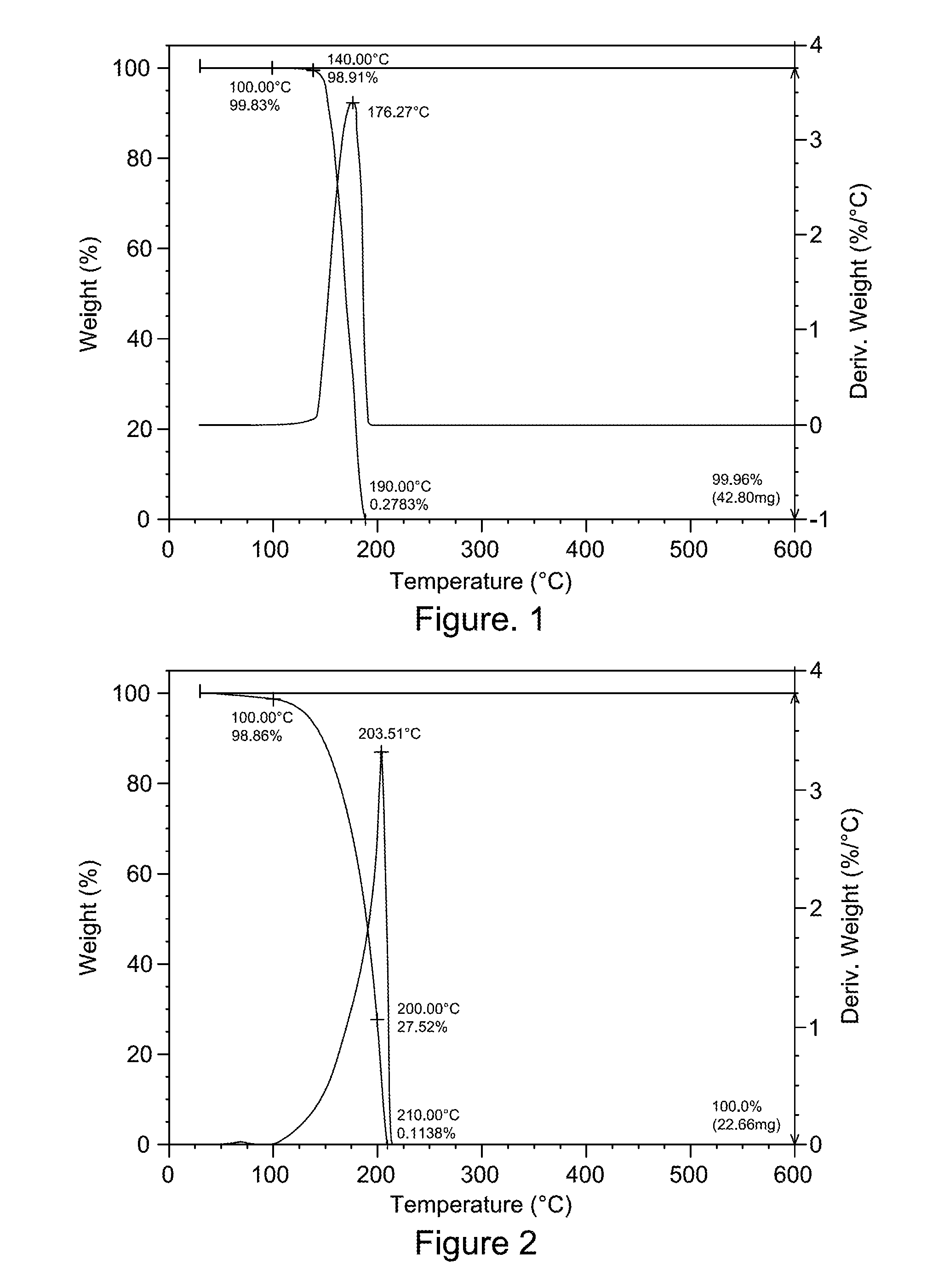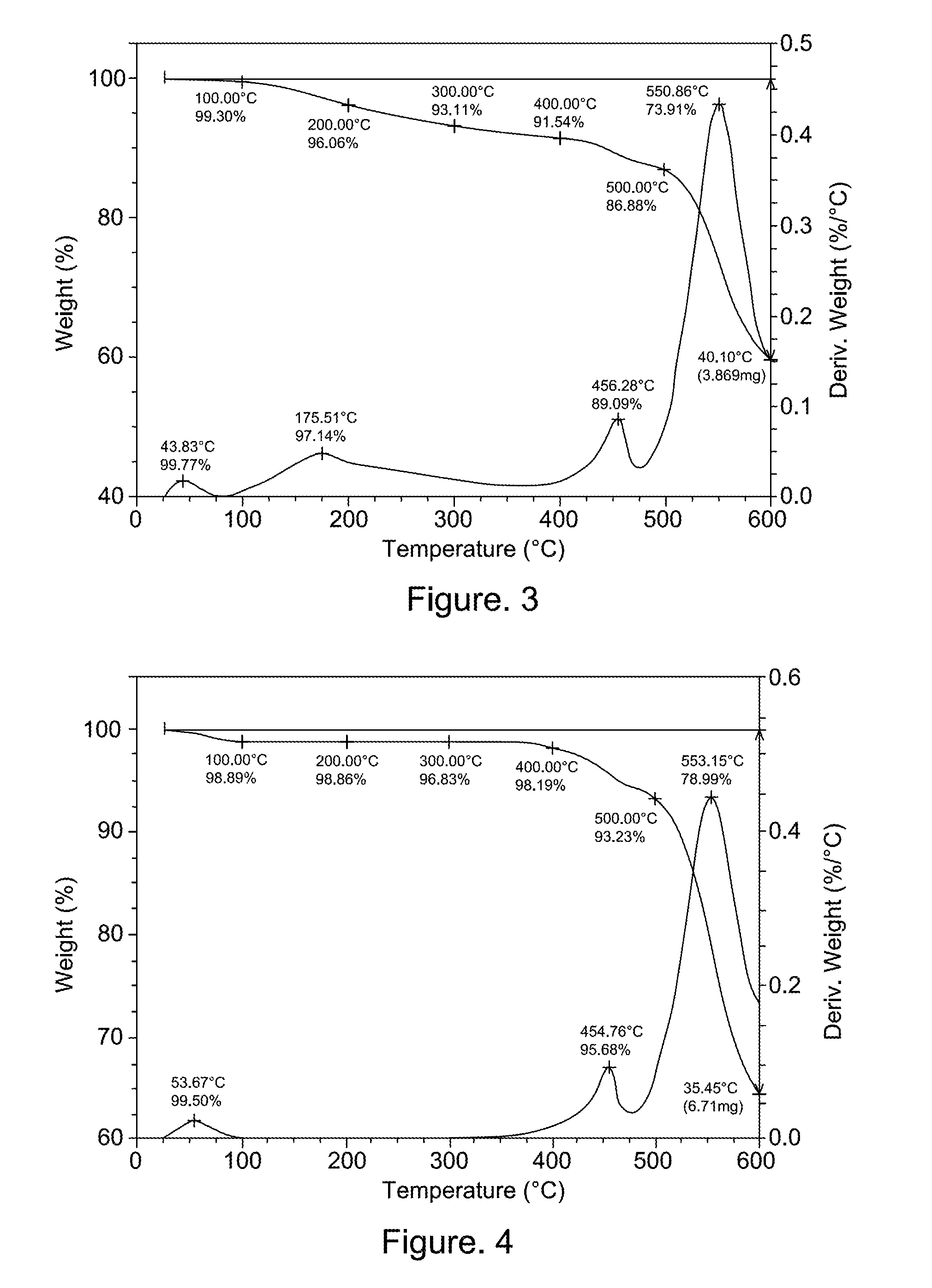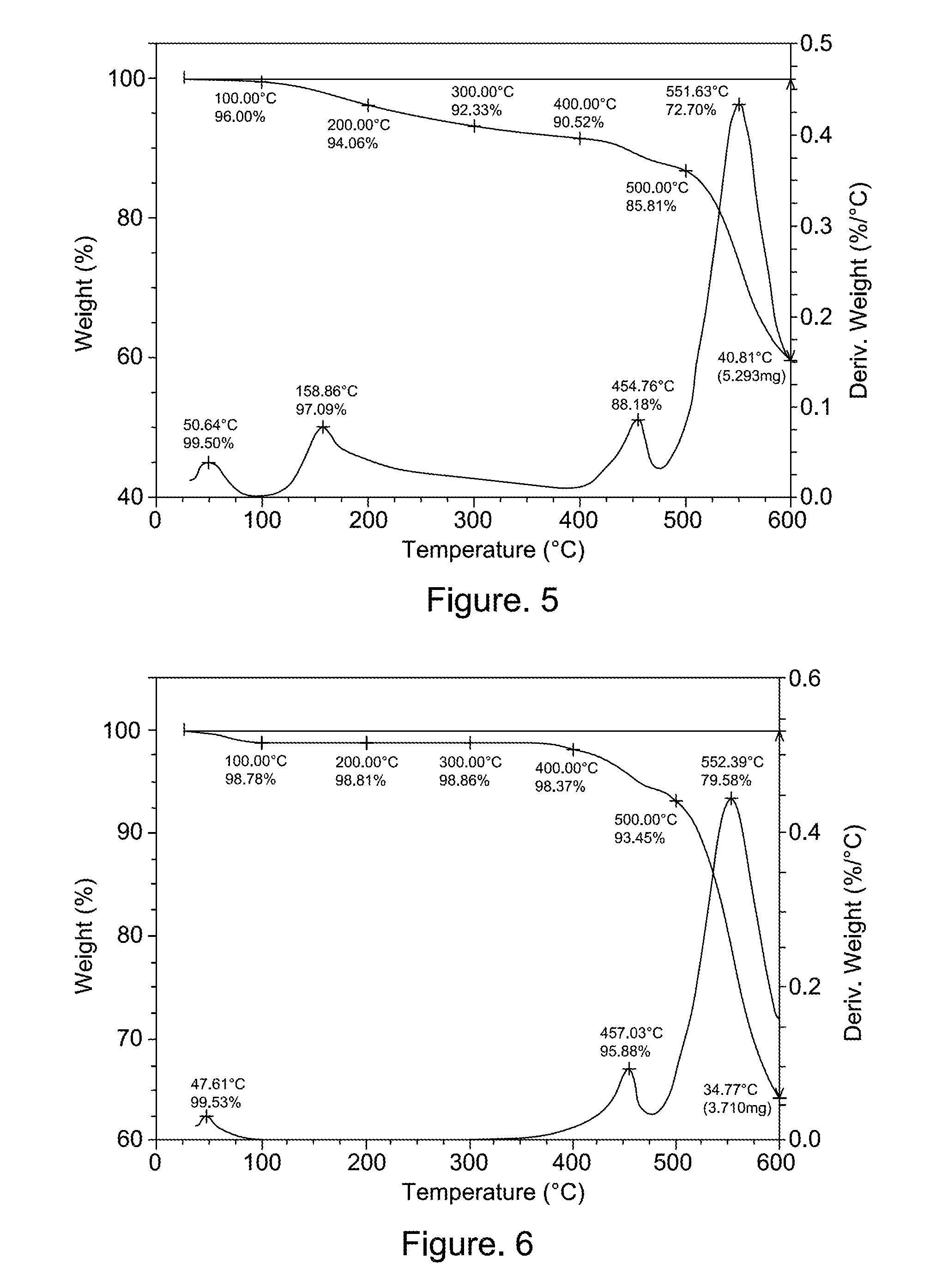Polymers, polymer membranes and methods of producing the same
a polymer membrane and polymer technology, applied in the field of polymer membranes and polymer membranes, can solve the problems of insufficient space for large-scale co-operative movement of the polymer backbone, temperature-dependent permeability and selectivity, and large free volum
- Summary
- Abstract
- Description
- Claims
- Application Information
AI Technical Summary
Benefits of technology
Problems solved by technology
Method used
Image
Examples
example 1
Synthesis of Polymer P1 6FDA-bisAPAF
[0223]An oven dry 3-neck 500 mL round-bottomed flask was equipped with a mechanical stirrer, a nitrogen inlet, a thermocouple, and a drying tube. To the flask was added 4,4′-(Hexafluoroisopropylidene)diphthalic anhydride (6FDA, purchased from DuPont Company) (41.30 g, 0.093 mol) and N-methylpyrrolidone (NMP, electronic grade purchased from Mallankroft) (96.5 g). The mixture was stirred under nitrogen at room temperature for half hour. 2,2-(3-amino-4-hydroxyphenyl)hexafluoropropane (bisAPAF, purchased from Central Glass Corporate, Japan) (33.70 g, 0.093 mol) was dissolved in 101 g of NMP and added to an additional funnel. The bisAPAF solution was added drop wise to the 6FDA / NMP mixture in the flask to maintain temperature below 40 degrees C. After addition, the additional funnel was rinsed with 27.5 g of NMP. The viscous solution was stirred at room temperature under nitrogen overnight. To the reaction was added 27 g of xylenes (purchased from Aldr...
example 2
Synthesis of Polymer P2: 6FDA-DABA
[0224]Polymer P2 was prepared similarly to polymer P1. 4,4′-(Hexafluoroisopropylidene)diphthalic anhydride (6FDA, purchased from DuPont Company) (33.45 g, 0.075 mol) was reacted with 3,5-diaminobenzoic Acid (DABA, purchased from Acros Organics) (11.52 g, 0.076 mol) in 180 g of N-methylpyrrolidone (NMP, electronic grade, purchased from Mallinkroft) and 25 g of xylenes. The polymerization temperature was maintained between 167-174 degrees C. for 24 hours. The polymer was precipitated into water and polymer was collected by filtration, and dried under vacuum at 100 degrees C. overnight. GPC indicated the polymer has a weight average molecular weight of 61,474.
example 3
Synthesis of Polymer P3
[0225]A dry 3-neck 100 mL round-bottomed flask was equipped with a mechanical stirrer, a nitrogen inlet, a thermocouple, and a drying tube. To the flask was added 26.5 g of polymer P1 solution (17.1 mmol of OH group). The solution was diluted with 8.0 g of NMP. To the solution was added 2-bromoacetonitrile (purchased from Aldrich Chemical Company) (3.1 g, 26 mmol). After 5 minutes of mixing, potassium carbonate (purchased from Fisher Scientific) (3.6 g, 26 mmol) was added as solid. The reaction was stirred at room temperature overnight under nitrogen. Polymer was precipitated into water, filtered, and dried under vacuum overnight at 80 degrees C. 7.0 g of polymer was recovered. 13C NMR indicated that 54% of OH reacted to form ether linkage.
PUM
| Property | Measurement | Unit |
|---|---|---|
| Percent by mass | aaaaa | aaaaa |
| Mass | aaaaa | aaaaa |
| Temperature | aaaaa | aaaaa |
Abstract
Description
Claims
Application Information
 Login to View More
Login to View More - R&D
- Intellectual Property
- Life Sciences
- Materials
- Tech Scout
- Unparalleled Data Quality
- Higher Quality Content
- 60% Fewer Hallucinations
Browse by: Latest US Patents, China's latest patents, Technical Efficacy Thesaurus, Application Domain, Technology Topic, Popular Technical Reports.
© 2025 PatSnap. All rights reserved.Legal|Privacy policy|Modern Slavery Act Transparency Statement|Sitemap|About US| Contact US: help@patsnap.com



